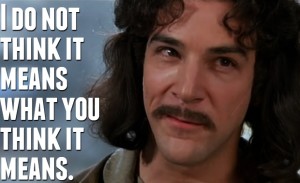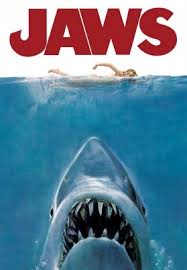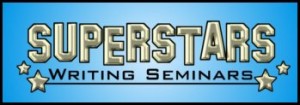 Ever gone to a school performance where the one kid who’s supposed to be a supporting character, like a tree or a second line singer, either breaks out of character and does something hilarious, or performs with such enthusiasm that they steal the show from the lead actors?
Ever gone to a school performance where the one kid who’s supposed to be a supporting character, like a tree or a second line singer, either breaks out of character and does something hilarious, or performs with such enthusiasm that they steal the show from the lead actors?
Or, imagine this: Two aliens walk into a bar. One is an intergalactic hit-man and the other is a mind-reader helping him hunt down his next target. They scope out the bar and begin closing in on the target. At that point, the story is locked in and the readers are focused either on rooting for the hit-men or for the hapless victim.
But then imagine one of the serving girls stumbles into them, spilling beer all over their clothing and short-circuiting the electronics of their laser guns. When they try pushing past to chase their escaping quarry, she sets their alcohol-soaked clothing on fire and handcuffs them to the bar.
The story focus just totally changed. If that was the intention, perfect. Great twist. If not, then the waitress either needs to become a major focus of the story, or that scene needs to be cut. All depends on what the author has in mind and what the real story is being told.
Sometimes letting a secondary character really roar pays off in spades. The easiest examples can be found in movies:
 The saber-tooth squirrel in Ice Age
The saber-tooth squirrel in Ice Age- The Joker from Batman
- Inigo Montoya from The Princess Bride
- Loki from Avengers
- Even Wilson the volleyball from Castaway
Sometimes when a secondary character bursts free of the originally-planned constraints placed upon them, it can be a good thing. Perhaps it’s your subconscious mind trying to explain that you picked the wrong protagonist or that there is more story to be explored there.
However, sometimes those secondary characters are just unruly and despite how funny or distracting their antics might be, they threaten to derail the real story. In those instances those characters need to be reined in and controlled.
How do you tell the difference?
Well, it depends.
I hate it when people use that answer because it always feels like a cop-out. The reason it works here is that it really does depend on the situation, and only the author can really tell.
For example, In the novel I am writing now I chose to explore some side characters and develop secondary conflicts in greater detail than originally planned because I had not outlined that part of the novel in great depth and I was still searching for the best way to pursue the heart of the story. I accepted the cost and spent the time exploring the characters and the setting and,
although I’m planning to cut most of that work, it helped bring the setting to life and solidify in my mind the most important scenes. Those secondary story aspects threatened to derail the focus on the primary story line, and there is not enough room in the book to follow both. So I’ll kill those upstart character arcs, re-focus the narrative, and consider it time well spent instead
of a waste.
Then again, in another novel where I had to create a secondary antagonist, the resulting character was so fascinating they really became a primary antagonist, and readers loved it. The ‘real’ bad guy carries over into sequels, but this secondary character is the one that helped the first novel shine and set up the other antagonist for greater success later in the series. So in that case,
exploring the secondary character’s fascinating potential really paid off.
In another twist, in my YA fantasy novel, a couple of the secondary characters needed to take a larger role in the story because they provided comic relief and I chose to focus more on the humorous aspects of the story. The resulting changes make them some of the best-loved characters in the story even though they are not the primary protagonist, but their arcs interweave closely with his and result in strengthening the story instead of breaking it.
 So, when to let your characters roam free and when to rein them in? Here are a few questions you can ask yourself to help decide:
So, when to let your characters roam free and when to rein them in? Here are a few questions you can ask yourself to help decide:
- If I explore the new ideas, will they fundamentally change the story? If so, is it an improvement?
- Will this diminish the power of what I’m trying to accomplish with the main character, or will this add complexity and interest to an already strong story?
- Do I have any idea where the changes are leading? If not, and if I follow that road, I accept the cost in time and rewrites when I hit the likely dead end because that cost is offset by the pleasure of following that road through the fog to find out where it goes.
- Should I switch to a more interesting protagonist? Or is there something fascinating I can borrow from this secondary character and imbue my protagonist with it to make him more powerful?
- Are the antics of this secondary character making improvements or are they just hamming up the stage with no long-term gain?
Enjoy the process, make your plan, but be open to flashes of inspiration that might just make it better by derailing it.
Who are your favorite supporting characters, and why?






